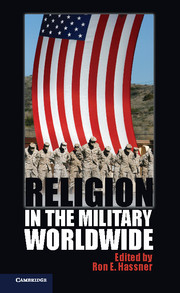5 - Israel
Published online by Cambridge University Press: 05 June 2014
Summary
The defining characteristic of the modern state of Israel is that it is the only country in the world in which the majority of citizens are Jews. Indeed, the Law of Return passed by the Knesset (Israel’s parliament) in July 1950 – just two years after the establishment of the state – explicitly granted all Jews, as well as persons of Jewish ancestry, permission to immigrate to Israel and apply for Israeli citizenship. Over the years, more than two million persons have availed themselves of this opportunity. As a consequence, notwithstanding a far higher birthrate among the country’s Arab minority, Jews in 2010 still constituted more than 75 percent of Israel’s total population (as opposed to almost 90 percent in 1950). Because all Muslim Arabs are automatically granted exemptions from conscription, the discrepancy in the composition of the Israel Defense Forces (IDF) is even greater. Jews make up more than 97 percent of the men and women who perform military service in Israel. Recruitment among other population segments (Bedouin, Druze, and Christians of varying denominations), although sociologically interesting, is statistically irrelevant. To all intents and purposes, the IDF is an army of Jews.
The IDF is also a “Jewish” army, in the sense that traditional Jewish themes and motifs form integral parts of its texture. Only in part is that characteristic demonstrated by the fact that all IDF kitchens conform to traditional Jewish dietary requirements, that the Sabbath and Jewish holy days shape military schedules with respect to training and vacations, and that all Jewish military burials are performed in accordance with traditional religious practice. Equally indicative is the extent to which each other major rite of passage in the Israeli military experience is also deliberately suffused with ceremonies and pageants designed to arouse profound Jewish connotations. For instance, at his or her induction, each new recruit receives a copy of the Old Testament, which religious conscripts necessarily consider to contain sacred scriptures, and which nonbelievers have been taught at school to regard as the formative text of the Jewish and Hebrew literary corpus.
- Type
- Chapter
- Information
- Religion in the Military Worldwide , pp. 114 - 140Publisher: Cambridge University PressPrint publication year: 2013
References
- 1
- Cited by



